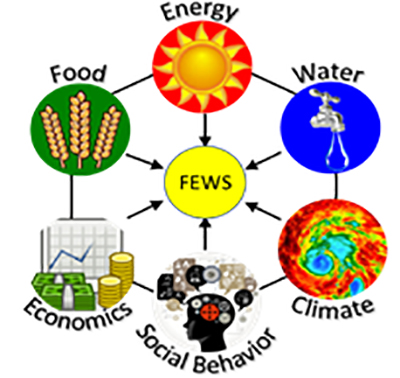China-US Workshop
Modeling the Nexus of Food, Energy, and Water Systems
July 19-22, 2018, Beijing, China
This workshop aims to identify the interrelationships and feedback loops of the complex processes that support the functions of food, energy, and water systems (FEWS). It focuses on modeling FEWS components, with a goal of optimizing and integrating existing models into a holistic FEWS model. Print a PDF of the Workshop Flyer in English or in Chinese.
Venue and Hotel:
The workshop will be held at the Renmin University of China Conference Center in Beijing. Recommended hotels are the Beijing Yanshan Hotel and the Xianjinlou Hotel on campus.
Registration:
The registration fee is 1,800 RMB or 280 US dollars. There is no charge to invited speakers and guests. For questions, please contact Xiaolong Feng (fewsmodeling@126.com, +86-15712997435), or Sherry Redus (sredus@utk.edu, +1-865-974-0721).
Organizers
- Renmin University of China
- The University of Tennessee, USA
- Oak Ridge National Laboratory, USA
- Southern University of Science & Technology, China
- Nanjing University, China
Sponsors
- National Natural Science Foundation
of China (NSFC)
- National Science Foundation, USA (NSF)
- Renmin University of China, China
- The University of Tennessee, USA

Specific objectives to be addressed at this workshop are:
- The crop component considers variables impacting crop quality and yield, such as seed and plant selections, tillage, climate impact, disease control, pesticide application, irrigation, vegetation cover, harvesting, soil management, fertilizer usage, and waste recycling.
- The energy component includes energy consumption and generation from sources such as biomass, wastes, hydropower, solar, and wind. The main variables include reservoirs, water bodies, crop residues, power needs, land use, wastewater, landfills, river health, irrigation, floods, and droughts.
- The water component relates to water availability and quality as well as crop nutrient use and nutrient/pollutant release to the environment. The variables include water bodies, climate, rainfall, droughts, soil erosion, drainage, salinity, irrigation, fertilizers, and biogeochemical processes.
- The economy component addresses various economic stages that are influenced by the status and functions of food, energy, and water systems. The main variables are energy consumption, food production, food quality and prices, land use, urbanization, waste recycling, water needs, irrigation, ecosystem services, and environmental remediation.
- The social component focuses on the roles and relationships of stakeholders at local, regional, and federal levels, such as farmers, researchers, bankers, governmental agencies, NGOs, crop advisors, retailers, and policy makers. The social component considers the drivers that influence a stakeholder’s individual decision-making and how the decision affects other stakeholders.
- The climate component addresses the impacts of climate change on the FEWS nexus, and the adaptation of FEW sectors to climate change with respect to transformation of social and economic behaviors and functions. This component emphasizes the increasing environmental pressures on FEWS that may differ across geographic regions.
